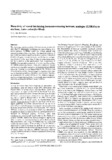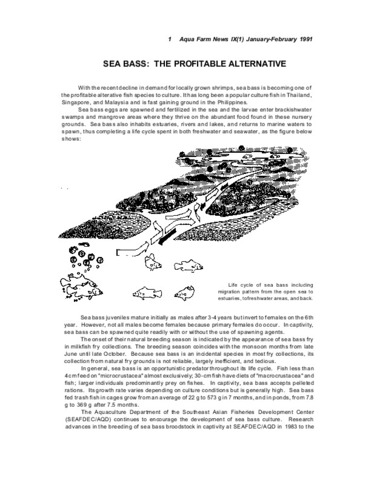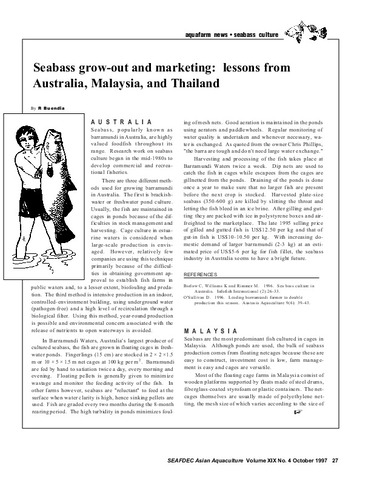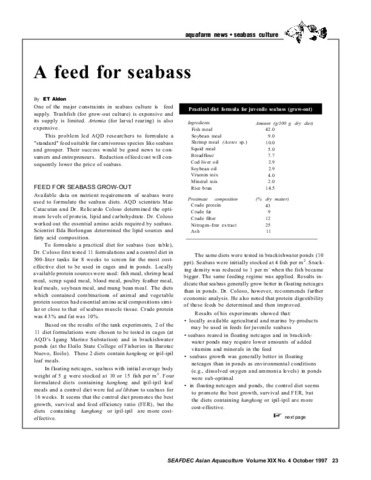Bioactivity of stored luteinizing hormone-releasing analogue (LHRHa) in sea bass, Lates calcarifer Bloch
- Global styles
- MLA
- Vancouver
- Elsevier - Harvard
- APA
- Help

View/
Date
1996Author
Page views
1,425AGROVOC keyword
Taxonomic term
Metadata
Show full item record
Share
Abstract
The spawning induction activity of dissolved and pelleted (D-Ala6, Pro9 N ethylamide) luteinizing hormone-releasing hormone analogue (LHRHa) stored for various periods was assessed in mature female sea bass. The spawning response of mature fish was reduced significantly after injection of dissolved LHRHa (20 μg kg−1) stored for more than 90 days in a refrigerator (4–10°C) or for more than 30 days at room temperature (28–30°C). Similar to fish administered fresh preparations of LHRHa, fish spawned successfully after injection of a solution of LHRHa previously frozen, subjected to alternate freezing and thawing, exposed to sunlight or implanted pelleted LHRHa (50 ng kg−1) stored at room temperature for 30–120 days. Loss of hormone bioactivity after prolonged storage may have been due to bacterial growth in solubilized preparations. Injection or implantation of stored LHRHa did not influence egg production among treated sea bass. These results demonstrated the relatively prolonged shelf life of stored LHRHa.
Suggested Citation
Garcia, L. M. (1996). Bioactivity of stored luteinizing hormone-releasing analogue (LHRHa) in sea bass, Lates calcarifer Bloch. Journal of Applied Ichthyology , 12(2), 91-93. https://doi.org/10.1111/j.1439-0426.1996.tb00068.x
Type
ArticleISSN
0175-8659Collections
- Journal Articles [1258]
Related items
Showing items related by title, author, creator and subject.
-
Sea bass: The profitable alternative
Southeast Asian Fisheries Development Center, Aquaculture Department (Aquaculture Department, Southeast Asian Fisheries Development Center, 1991) -
Seabass grow-out and marketing: lessons from Australia, Malaysia, and Thailand
Buendia, Romeo (Aquaculture Department, Southeast Asian Fisheries Development Center, 1997) -
A feed for seabass
Aldon, E. T. (Aquaculture Department, Southeast Asian Fisheries Development Center, 1997)One of the major constraints in seabass (Lates calcarifer) culture is feed supply. Details are given of work conducted at AQD regarding the formulation of a 'standard' feed suitable for carnivorous species like the seabass ...






